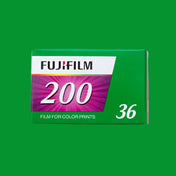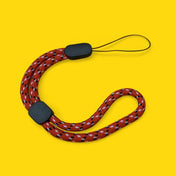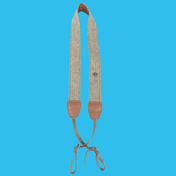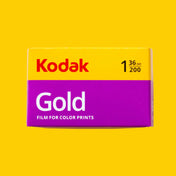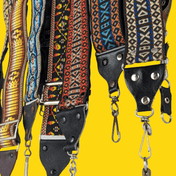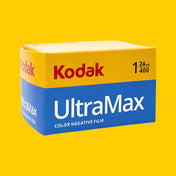Decoding Photography: Understanding Aperture in Depth
Aperture is a critical component in the art and science of photography, playing a pivotal role in how a photograph is exposed and how the final image looks. Understanding aperture is essential for photographers at any level, as it impacts depth of field, exposure, and the overall aesthetic quality of the image.
Key Concepts of Aperture
-
Definition of Aperture: Aperture refers to the opening in a camera lens through which light passes to enter the camera body. It's analogous to the pupil of an eye, regulating the amount of light that reaches the camera sensor.
-
Measurement: Aperture is measured in f-stops (e.g., f/1.4, f/2.8, f/8). A lower f-stop number means a larger aperture, allowing more light to pass through, while a higher f-stop number indicates a smaller aperture, letting in less light.
-
Depth of Field: Aperture affects the depth of field in an image. A larger aperture (smaller f-stop number) results in a shallower depth of field, making the background more blurred, which is often used for portraits. A smaller aperture (larger f-stop number) provides a greater depth of field, keeping more of the image in focus, which is ideal for landscapes.
-
Exposure Triangle: Aperture is one part of the exposure triangle, along with shutter speed and ISO. Adjusting the aperture affects the exposure, or brightness, of the photograph. A larger aperture lets in more light, brightening the image, whereas a smaller aperture reduces the light, darkening the image.
-
Creative Effects: Beyond exposure and depth of field, aperture can be used creatively. For instance, a large aperture can create a bokeh effect, where lights in the background appear as soft, out-of-focus orbs.
-
Lens Characteristics: Different lenses have different maximum and minimum aperture sizes. Prime lenses often have larger maximum apertures (e.g., f/1.4) compared to zoom lenses. This affects their ability to shoot in low light conditions and their potential for creating shallow depth of field effects.

Practical Applications
-
Portrait Photography: Using a large aperture to isolate the subject from the background.
-
Landscape Photography: Employing a small aperture to ensure that the entire scene is in focus.
-
Low Light Photography: Opting for a larger aperture to capture more light in dim settings.
-
Action Photography: Balancing aperture with shutter speed to freeze motion without underexposing the image.
Tips for Mastering Aperture
-
Experimentation: The best way to understand aperture is through hands-on experience. Experiment with different settings to see their effects.
-
Mind the Light: Remember that changing the aperture affects the amount of light in your photograph. Adjust ISO and shutter speed accordingly.
-
Know Your Lens: Familiarise yourself with the aperture range of your lens to make the most of its capabilities.
-
Visualise the Depth of Field: Before taking a shot, visualise how the depth of field will impact the composition.
In summary, mastering aperture is crucial for any photographer looking to enhance their skills and creativity. It's not just a technical setting, but a powerful tool for artistic expression in photography.
Advanced Concepts of Aperture
-
Aperture and Lens Quality: The maximum aperture of a lens isn't just about light; it also indicates the quality of the lens. Lenses with larger maximum apertures (like f/1.4 or f/2.8) are often higher in quality and allow for more creative control, but they also tend to be more expensive.
-
Diffraction Limitation: At very small apertures (high f-stop numbers), some lenses can experience diffraction, which slightly blurs the image. This is important for photographers to consider when seeking maximum sharpness in their images.
-
Bokeh Quality: The term "bokeh" refers to the quality of out-of-focus areas in a photograph. Different lenses produce different bokeh effects, influenced by the shape and number of aperture blades. A lens with more rounded blades creates smoother, more pleasing bokeh.
-
Sweet Spot of a Lens: Most lenses have a "sweet spot," an aperture setting where the lens performs best in terms of sharpness and clarity. This is typically not at the maximum or minimum aperture, but somewhere in the middle range.
Types of Lenses and Their Aperture Characteristics
-
Prime Lenses: Prime lenses have a fixed focal length and often feature larger maximum apertures (like f/1.4, f/1.8). These larger apertures allow more light to enter, making prime lenses ideal for low-light photography and for achieving a shallow depth of field.
-
Zoom Lenses: Zoom lenses offer variable focal lengths but typically have smaller maximum apertures (e.g., f/3.5-5.6). Some professional zoom lenses maintain a constant large aperture (e.g., f/2.8) throughout the zoom range, but these tend to be bulkier and more expensive.
-
Specialty Lenses: Macro lenses, tilt-shift lenses, and fisheye lenses, each designed for specific purposes, also have unique aperture ranges that suit their specific use. For example, macro lenses often have smaller apertures to provide a greater depth of field for detailed close-up shots.
-
Telephoto Lenses: Telephoto lenses, especially those with very long focal lengths, often have smaller maximum apertures. This is due to the physical limitations and increased complexity of manufacturing large-aperture lenses with long focal lengths.
Impact of Aperture in Lens Design
-
Lens Brightness and Quality: Lenses with larger maximum apertures (lower f-stop numbers) are often referred to as "faster" lenses because they can achieve the same exposure with a faster shutter speed. They are generally more sought-after for their ability to perform well in low light and for the quality of the bokeh they produce.
-
Size and Weight: Larger apertures require bigger lens elements, which can significantly increase the size and weight of a lens. This is a key consideration for photographers who need to balance lens speed with portability.
-
Cost: Lenses with larger apertures are typically more expensive due to the higher quality glass required and the complexity of the lens design.
-
Sharpness and Aberrations: The aperture of a lens also affects its sharpness and the presence of aberrations. Lenses often are not at their sharpest at their maximum aperture and may show more lens aberrations (like chromatic aberration). Stopping down the aperture (using a higher f-stop number) generally increases sharpness and reduces aberrations.
Choosing the Right Aperture in a Lens
-
Consider the Use Case: The choice of lens aperture should align with the photographer's needs. For instance, portrait photographers often prefer lenses with large apertures for shallow depth of field, while landscape photographers may opt for lenses that offer sharpness across a wider aperture range.
-
Balancing Factors: When choosing a lens, consider the trade-offs between aperture, size, weight, and cost. A lens with a very large aperture might be ideal in terms of light gathering and depth of field control but may be impractical for everyday use due to its size and cost.
-
Aperture Sweet Spot: Each lens has a “sweet spot” – an aperture setting where the lens performs best in terms of sharpness. Knowing this can greatly enhance the quality of the images.
-
Depth of Field Requirements: Choose a lens with an aperture range that suits your depth of field requirements. For example, if extensive background blur (bokeh) is a priority, a lens with a larger maximum aperture is preferable.
In conclusion, the aperture capabilities of a lens are a fundamental aspect of its design and function, affecting everything from image quality to the lens’s physical characteristics. Understanding these aspects allows photographers to make informed decisions about which lens to use in various shooting scenarios and how to maximize the potential of the aperture settings available to them.
Aperture in Various Photography Genres
-
Macro Photography: Aperture plays a crucial role in macro photography, where controlling the depth of field is crucial due to the close proximity of the subject.
-
Street Photography: A moderate aperture like f/8 is often used in street photography to balance depth of field with sufficient light intake and speed.
-
Astrophotography: Large apertures are preferred in astrophotography to capture as much light as possible from stars and other celestial bodies.
Advanced Tips for Using Aperture
-
Hyperfocal Distance: Understanding and utilising hyperfocal distance allows for maximizing depth of field in landscape photography. This involves setting the focus at a specific distance based on the aperture and focal length to keep everything from a certain point to infinity in focus.
-
Creative Use of Depth of Field: A shallow depth of field isn't just for portraits. It can be used creatively in various genres to draw attention to a specific part of the image or create a mood.
-
Bracketing Aperture: Like bracketing exposure, you can bracket aperture in challenging lighting conditions to ensure you capture the desired depth of field effect.
-
Aperture Priority Mode: Many photographers use aperture priority mode on their cameras, where they select the aperture while the camera automatically adjusts the shutter speed. This allows for quick adjustments and control over depth of field while maintaining correct exposure.
Understanding aperture is integral to mastering photography. It affects not only the exposure and sharpness of an image but also provides a multitude of creative possibilities. Whether isolating a subject with a shallow depth of field, ensuring sharpness throughout a landscape, or manipulating light in low-light conditions, aperture is a key tool in the photographer's arsenal. With practice and experimentation, photographers can harness the full potential of aperture to enhance their creative vision and technical prowess in capturing compelling images.








